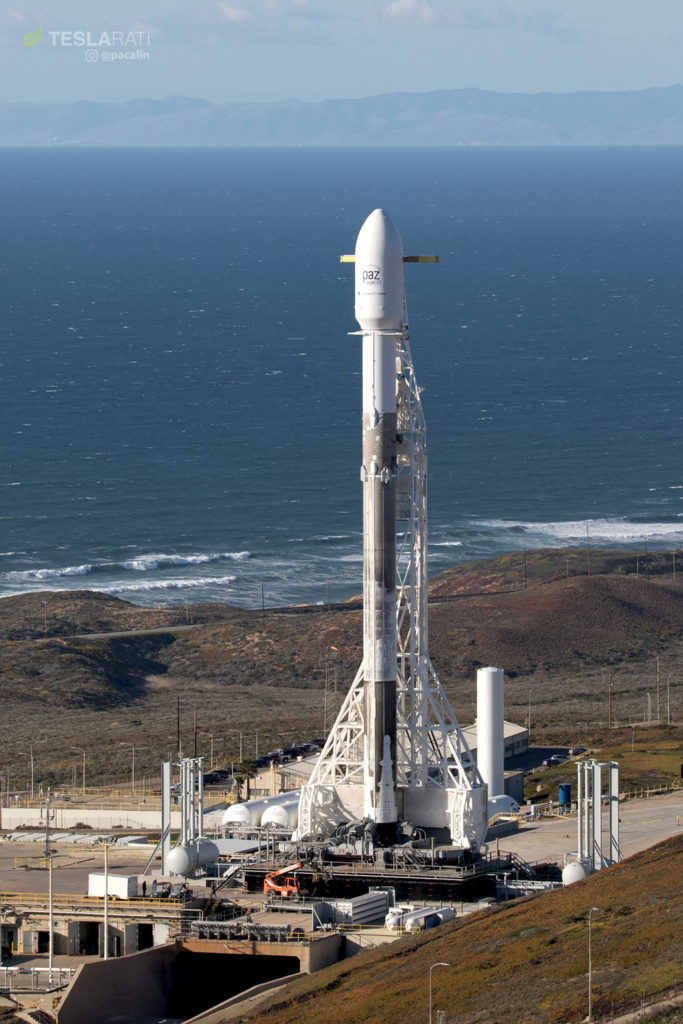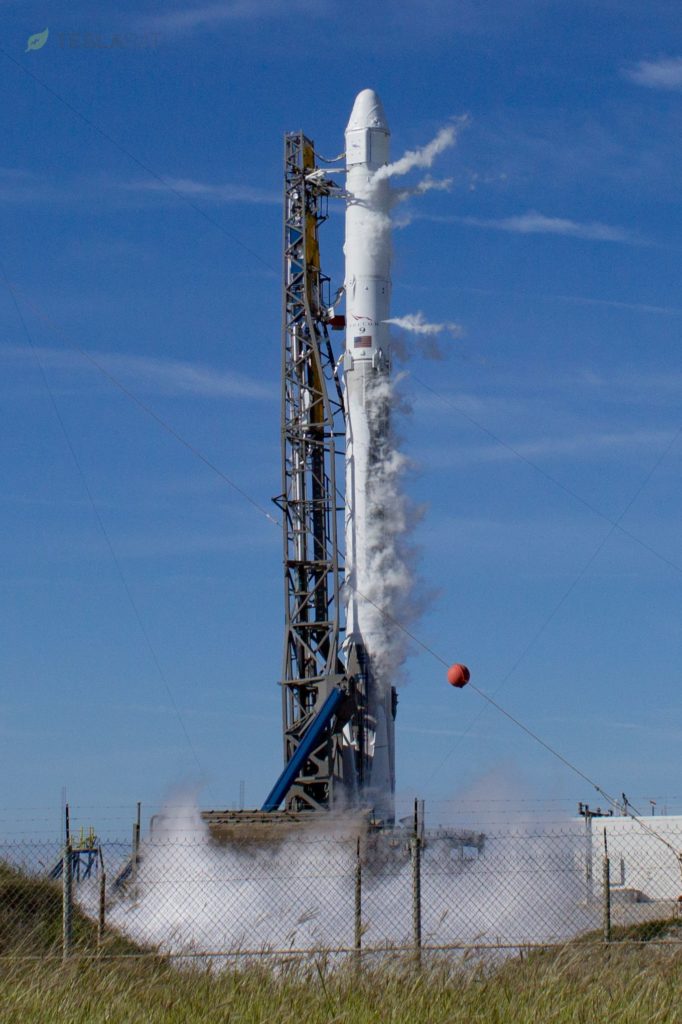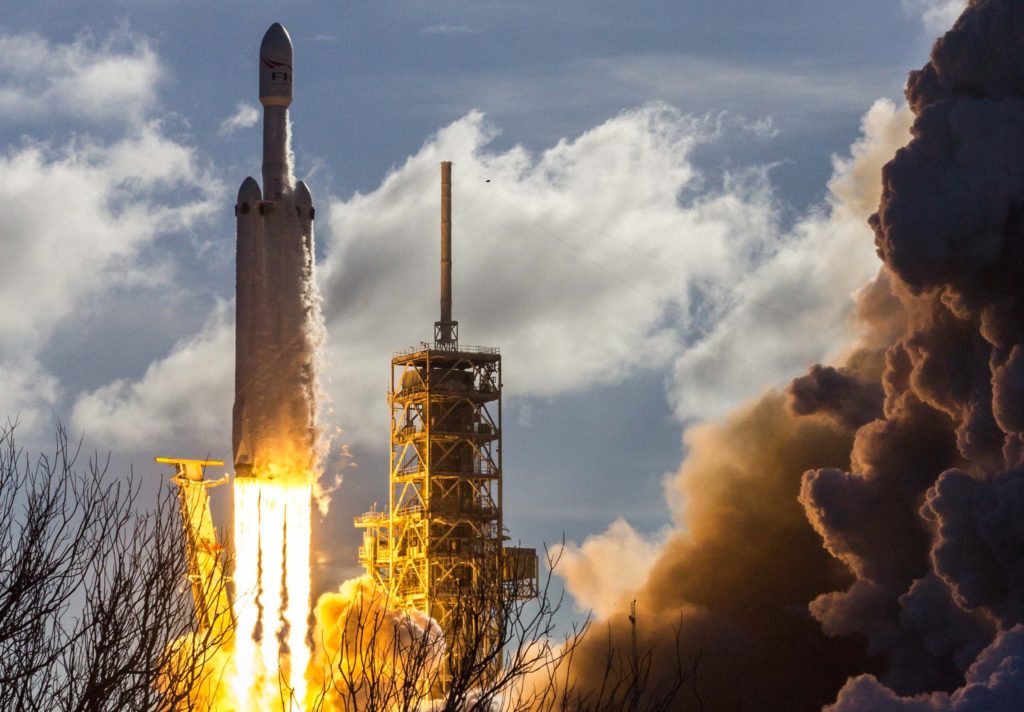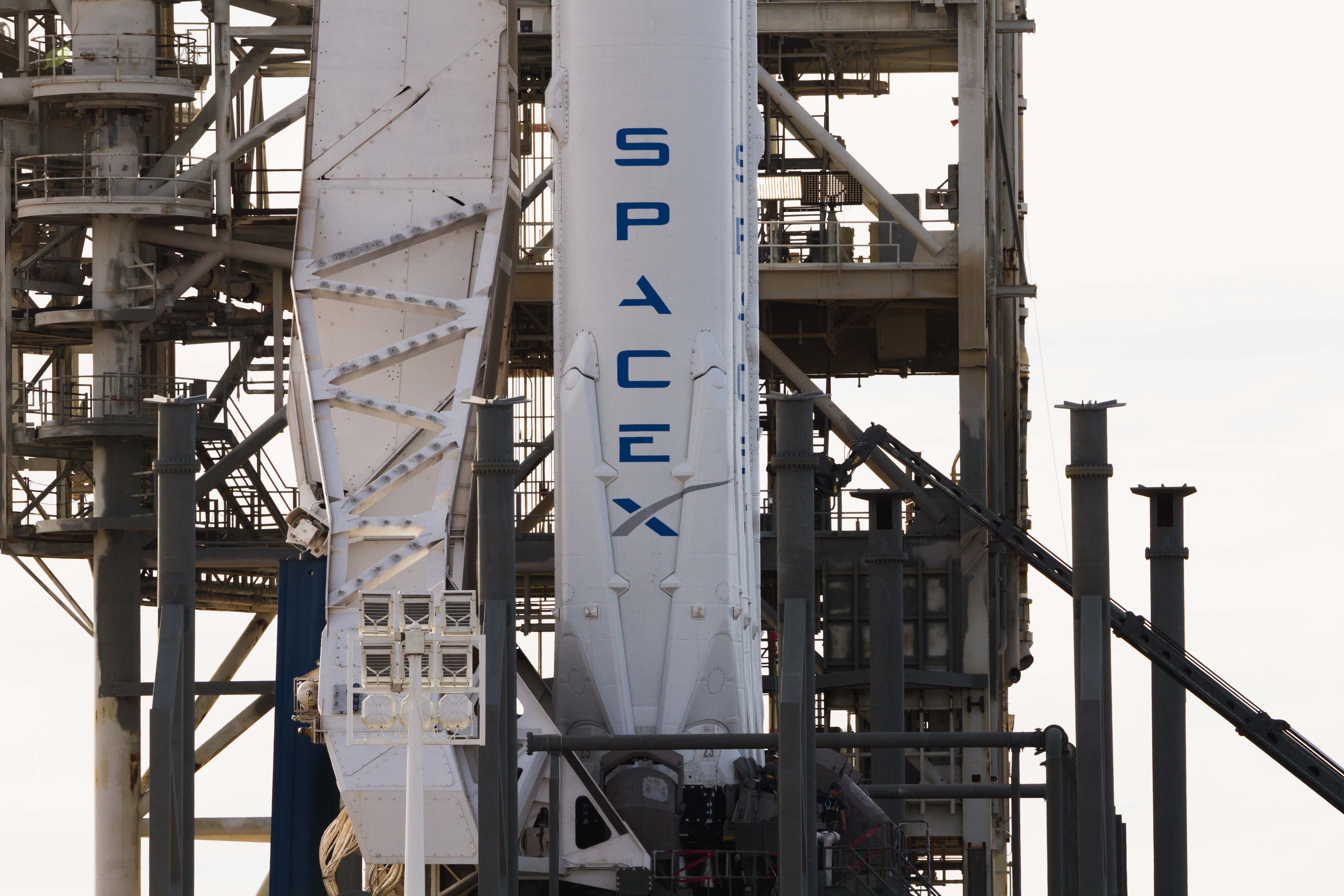

News
SpaceX to fly reused rockets on half of all 2018 launches as competition lags far behind
Speaking at SATELLITE 2018, SpaceX President Gwynne Shotwell reiterated the company’s commitment to and their customers’ acceptance of reusable rockets at the 2018, stating that SpaceX intends to fly reused boosters on at least half of their 2018 launch manifest.
Barring unforeseen circumstances, SpaceX is effectively on track to complete 30 separate missions this year with more than half flying flight-proven Falcon 9 (and Heavy) boosters. Thus far, the company has completed five launches – three flight-proven – in two months, perfectly extrapolating out to ~18 flight-proven missions and 30 total launches in 2018. While the middle weeks of March will not see any SpaceX launches, the company is on track to reach 11 flights total in late April/early March, six with reused boosters.
- SpaceX intends to launch three Falcon 9s from all three of its pads in just seven days. Pictured here their VAFB pad in California. (Pauline Acalin)
- LC-40, located in Cape Canaveral Air Force Station, is SpaceX’s second pad. (Tom Cross)
- Falcon Heavy roars off of LC-39A, SpaceX’s third operational pad. A fourth launch facility is under development in Texas. (Tom Cross)
Ignoring the tidal wave of reusable rockets
Ultimately, SpaceX’s scheduled launch cadence lends a huge amount of credence to Shotwell’s historically pragmatic claim. Assuming a successful introduction of Falcon 9 Block 5 sometime in April (currently April 5), SpaceX may even be able to get closer to flying reused boosters on two thirds of their 2018 launches, a truly jaw-dropping achievement for a year-old technology in an industry that previously saw minimal technological progress in rocketry for the better part of two decades, if not three or even four.
In almost every conceivable manner, SpaceX has taken a complacent industry by surprise, to such an extent that other major rocket builders have barely begun to develop their competitive responses to successful reuse. SpaceX’s main domestic and global competitors – ULA, Arianespace, and ILS – are at best five years away from more than dabbling in operationally reusable rocketry. ULA is in the best shape here, and their strategy of recovering just the engine segment of their future Vulcan rocket is unlikely to fly – let alone conduct the first real reuse of engines – before 2023 or 2024 at the absolute earliest, and reuse is by no means a public priority for the company.
SpaceX’s main competitors are at best five years away from more than dabbling in operationally reusable rocketry
At this point in time, Arianespace has been halfhearted for years in their attempts to seriously consider reusable rocketry. As of 2018, the closest they have gotten is a noncommittal study that would see the French and German space agencies field a Falcon 1-sized (tiny) vehicle to study the SpaceX approach to landing rockets. In the case of Arianespace, ULA, and ILS, their Ariane 6, Vulcan, and Proton Medium rockets currently under development for inaugural launches no earlier than 2020 have indeed all been explicitly designed to compete with SpaceX’s highly-competitive Falcon 9. Sounds promising, right? The reality, however, is that each distinct company has more or less designed their modernized rockets to compete with Falcon 9’s pre-reusability pricing. Even before SpaceX begins to seriously lower the cost of reused Falcon 9s at the customer level, their competitors are already incapable of beating the price of Falcon 9 and Falcon Heavy, at least without accepting net losses or leaning on government subsidies.
- Arianespace’s next-generation Ariane 6. (Arianespace)
- ULA’s upcoming Vulcan rocket. (ULA)
- ILS is developing a marginally different version of its Proton rocket, called Proton Medium. (ILS)
Arianespace’s Ariane 5 and ULA’s Atlas 5 and Delta 4 rockets do have impeccable and undeniably superior records of reliability, but SpaceX is making rapid progress towards enhanced reliability and unprecedented launch cadences. Falcon 9 Block 5 – SpaceX’s hard-won solution to rapid and cheaply reusable rocket boosters – is weeks away from its first launch, with something like six or more additional Block 5 boosters in the late stages of construction and assembly at SpaceX’s Hawthorne factory. The first prototype of BFR, a rocket designed with a fully-reusable booster and upper stage, has already begun to be assembled, with spaceship test hops scheduled to begin in 2019 and full-up orbital tests hoped to begin as early as 2020. Even with a pessimistic outlook on SpaceX’s BFR development prospects, the likelihood of orbital tests/operational launches beginning before the mid-2020s is incredibly high, barring insurmountable technological hurdles.
Whether or not SpaceX actually manages to begin its first flights to Mars in 2022 (even 2024-2026), BFR and its highly reusable orbital upper stage will swallow the launch industry whole if it manages to be even a tenth as affordable as its engineers intend it to be, and it will likely be in the late stages of hardware development and test launches before ULA, Arianespace, or ILS have even begun to operationally fly their tepid responses to reusability.

SpaceX’s BFR is being designed to launch crew, cargo, and fuel for unprecedentedly low prices. (SpaceX)
Follow us for live updates, behind-the-scenes sneak peeks, and beautiful photos from our East and West coast photographers.
Teslarati – Instagram – Twitter
Tom Cross – Twitter
Pauline Acalin – Twitter
Eric Ralph – Twitter
News
SpaceX’s Crew-11 mission targets July 31 launch amid tight ISS schedule
The flight will lift off from Launch Complex 39A at Kennedy Space Center in Florida.
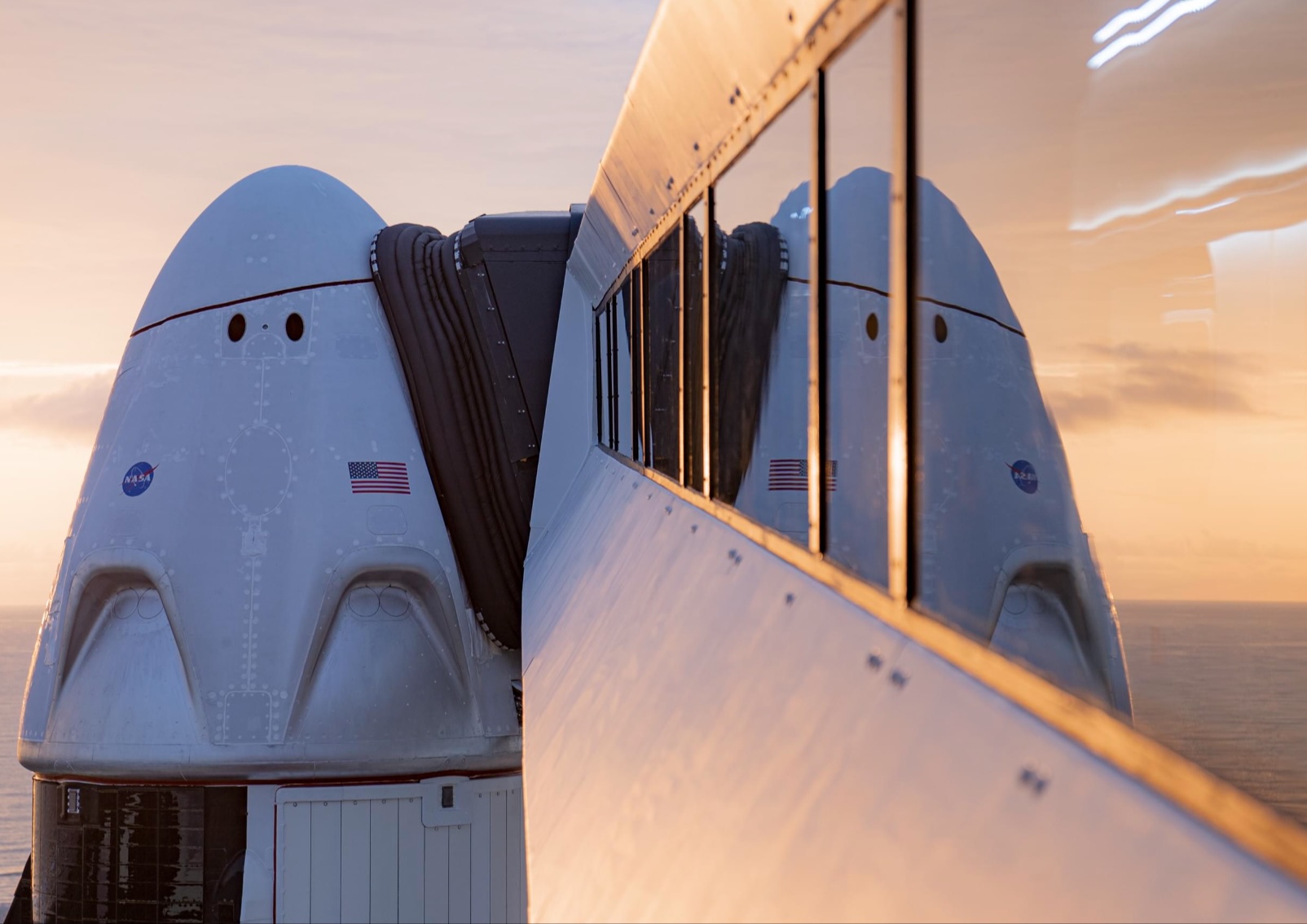
NASA and SpaceX are targeting July 31 for the launch of Crew-11, the next crewed mission to the International Space Station (ISS). The flight will lift off from Launch Complex 39A at Kennedy Space Center in Florida, using the Crew Dragon Endeavour and a Falcon 9 booster.
Crew Dragon Endeavour returns
Crew-11 will be the sixth flight for Endeavour, making it SpaceX’s most experienced crew vehicle to date. According to SpaceX’s director of Dragon mission management, Sarah Walker, Endeavour has already carried 18 astronauts representing eight countries since its first mission with NASA’s Bob Behnken and Doug Hurley in 2020, as noted in an MSN report.
“This Dragon spacecraft has successfully flown 18 crew members representing eight countries to space already, starting with (NASA astronauts) Bob (Behnken) and Doug (Hurley) in 2020, when it returned human spaceflight capabilities to the United States for the first time since the shuttle retired in July of 2011,” Walker said.
For this mission, Endeavour will debut SpaceX’s upgraded drogue 3.1 parachutes, designed to further enhance reentry safety. The parachutes are part of SpaceX’s ongoing improvements to its human-rated spacecraft, and Crew-11 will serve as their first operational test.
The Falcon 9 booster supporting this launch is core B1094, which has launched in two previous Starlink missions, as well as the private Ax-4 mission on June 25, as noted in a Space.com report.
The four-members of Crew-11 are NASA astronauts Zena Cardman and Mike Fincke, as well as Japan’s Kimiya Yui and Russia’s Oleg Platonov.
Tight launch timing
Crew-11 is slated to arrive at the ISS just as NASA coordinates a sequence of missions, including the departure of Crew-10 and the arrival of SpaceX’s CRS-33 mission. NASA’s Bill Spetch emphasized the need for careful planning amid limited launch resources, noting the importance of maintaining station altitude and resupply cadence.
“Providing multiple methods for us to maintain the station altitude is critically important as we continue to operate and get the most use out of our limited launch resources that we do have. We’re really looking forward to demonstrating that capability with (CRS-33) showing up after we get through the Crew-11 and Crew-10 handover,” Spetch stated.
Lifestyle
EV fans urge Tesla to acquire Unplugged Performance for edge in fleet and security industry
Unplugged Performance has built a name for itself by producing performance upgrades for Tesla vehicles.
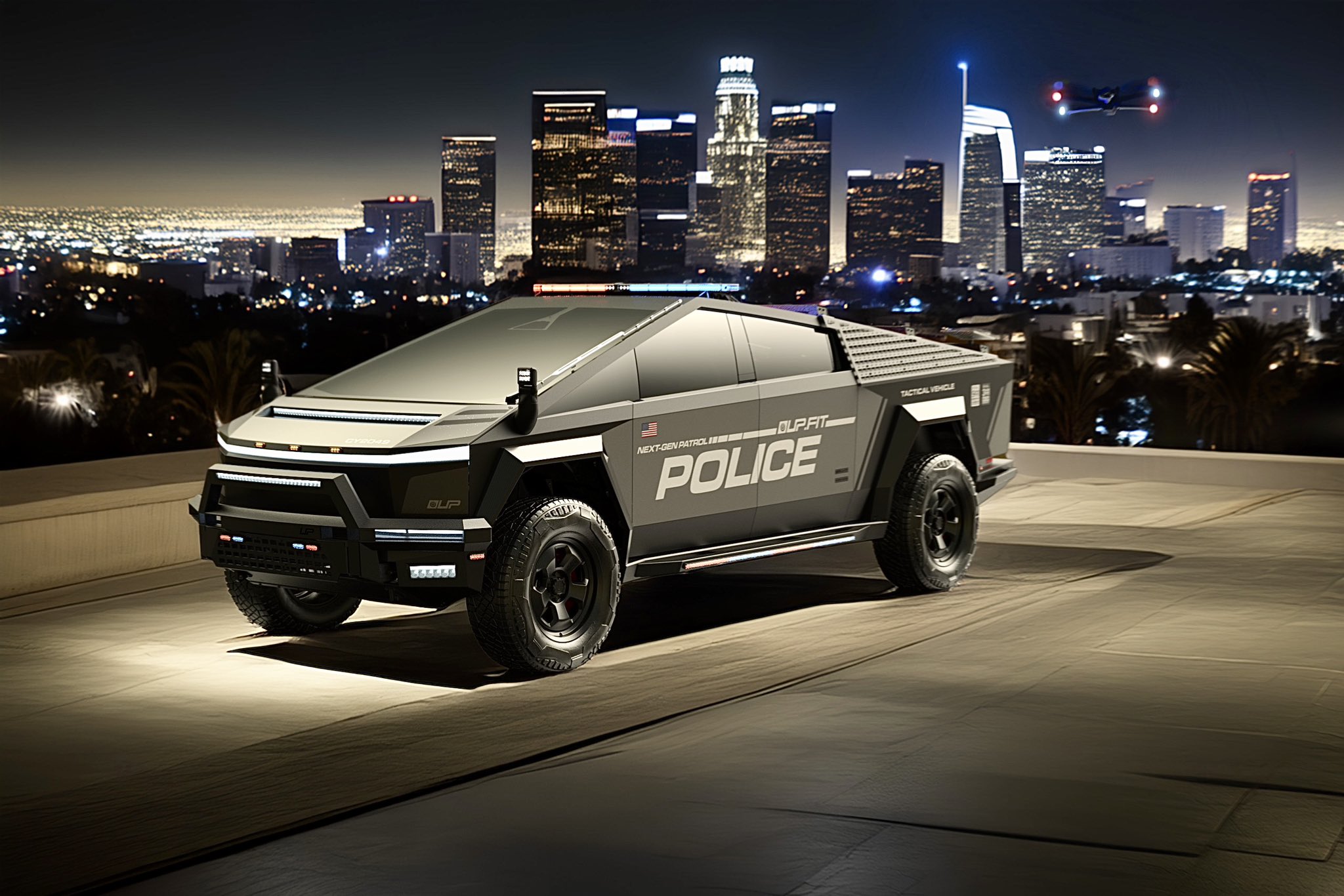
A growing number of Tesla enthusiasts and longtime community voices are calling on the electric vehicle maker to acquire Unplugged Performance, a California-based aftermarket company best known for tuning Tesla vehicles and developing specialized government fleet solutions under its UP.FIT division.
The idea was once considered a niche proposal among EV fans, but it is now gaining serious attention not just as a performance play but as a strategic move to deepen Tesla’s roots in the fleet and security industry.
A strategic fit
Unplugged Performance has built a name for itself by producing performance upgrades for Tesla vehicles, from track-optimized components to visual and aerodynamic upgrades. But in recent years, its UP.FIT division has pivoted toward a more functional future by outfitting Tesla vehicles like Model Ys for police, military, and government use.
That work has sparked growing calls for closer collaboration with Tesla, especially as the EV maker increasingly leans into autonomy, AI, and fleet services as core components of its next chapter.
“I posted this four years ago, but I think it’s more true now than ever,” wrote Whole Mars Catalog, a well-known Tesla investor and FSD Beta tester, on X. “Tesla should buy Unplugged. But not just as a Performance division. What they are doing with UP.FIT unlocks large government and commercial fleet purchases that can improve utilization.”
Tesla fans such as shareholder Sawyer Merritt echoed the sentiment, calling Unplugged a “great fit within Tesla.” adding, “They are literally located directly next to Tesla’s design studio in Hawthorne.”
Enabling the next wave
Supporters of the idea noted that integrating Unplugged into Tesla’s corporate structure could help accelerate the adoption of autonomous technologies in government sectors. With UP.FIT patrol cars already in use across some U.S. police departments, Tesla fans envisioned a future where self-driving Teslas could potentially revolutionize law enforcement, search-and-rescue, and public service logistics.
“Just imagine how autonomous patrol cars could transform policing and bring us into a safer future,” the veteran FSD tester wrote.
The benefits could also extend to Tesla’s existing consumer base. “They also have some incredible products in the works that I think will appeal to many ordinary Tesla drivers — not just those looking for performance or mods. Stuff that’s so good it should have come straight from the design studio next door,” Whole Mars Catalog noted.
Unplugged Performance, founded in 2013, shares not just a product vision with Tesla, but also geography. Its Hawthorne headquarters sits directly adjacent to Tesla’s design studio, and the two companies have maintained a close working relationship over the years. The aftermarket firm has long positioned itself as a “mission-aligned” partner to Tesla.
In response to the recent calls for acquisition, Unplugged Performance acknowledged the support from the community. “Our very existence is to support the Tesla mission with @UpfitTesla and @UnpluggedTesla,” Unplugged CEO Ben Schaffer posted on X. “We love working with Tesla and are grateful for the community’s support since 2013!”
News
Tesla debuts hands-free Grok AI with update 2025.26: What you need to know
All new Tesla vehicles delivered on or after July 12, 2025, will include Grok AI out of the box

Tesla has begun rolling out Grok, an in-car conversational AI assistant developed by xAI, to eligible vehicles starting July 12. The feature marks the most direct integration yet between Elon Musk’s artificial intelligence startup and Tesla’s consumer product lineup, offering drivers hands-free access to a chat-style companion while on the road.
Grok comes pre-installed on new vehicles
According to Tesla’s FAQ page for the feature, all new vehicles delivered on or after July 12, 2025, will include Grok AI out of the box. Owners of older vehicles may gain access through an over-the-air update, provided their vehicle meets a few hardware and software requirements.
Specifically, Grok is currently only supported on Tesla models equipped with an AMD infotainment processor and running vehicle software version 2025.26 and higher. Compatible models include the Model S, Model 3, Model X, Model Y, and Cybertruck. A Premium Connectivity subscription or active Wi-Fi connection is also required.
Tesla notes that additional vehicle compatibility may arrive in future software updates.
Grok’s features and limitations for now
Drivers can engage with Grok using the App Launcher or by pressing and holding the voice command button on the steering wheel. Grok is designed to answer questions and hold conversations using natural language, offering responses tailored to its chosen personality—ranging from “Storyteller” to the more eccentric “Unhinged.”
For fun, Tesla posted a demonstration of Grok likely running on “Unhinged” talking about what it would do to Optimus when they are on a date, much to the shock of the humanoid robot’s official social media account.
It should be noted, however, that Grok cannot currently issue commands to the vehicle itself, at least for now. Traditional voice commands for tasks like climate control, navigation, or media remain separate from Grok as of writing.
The feature is being released in Beta and does not require a Grok account or xAI subscription to activate, although that policy may change over time.
Grok privacy and in-car experience
Tesla emphasizes that interactions with Grok are securely processed by xAI and not linked to a user’s Tesla account or vehicle. Conversations remain anonymous unless a user signs into Grok separately to sync their history across devices.
Tesla has also begun promoting Grok directly on its official vehicle webpages, showcasing the feature as part of its in-car experience, further highlighting the company’s increasing focus on AI and infotainment features on its all-electric vehicles.
-

 Elon Musk2 weeks ago
Elon Musk2 weeks agoTesla investors will be shocked by Jim Cramer’s latest assessment
-

 Elon Musk3 days ago
Elon Musk3 days agoxAI launches Grok 4 with new $300/month SuperGrok Heavy subscription
-

 Elon Musk5 days ago
Elon Musk5 days agoElon Musk confirms Grok 4 launch on July 9 with livestream event
-

 News1 week ago
News1 week agoTesla Model 3 ranks as the safest new car in Europe for 2025, per Euro NCAP tests
-

 Elon Musk1 week ago
Elon Musk1 week agoxAI’s Memphis data center receives air permit despite community criticism
-

 News2 weeks ago
News2 weeks agoXiaomi CEO congratulates Tesla on first FSD delivery: “We have to continue learning!”
-

 Elon Musk2 weeks ago
Elon Musk2 weeks agoTesla scrambles after Musk sidekick exit, CEO takes over sales
-
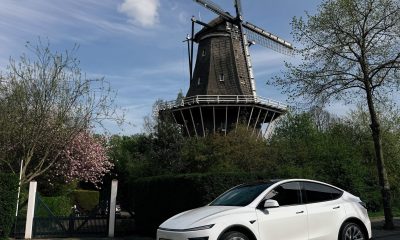
 News2 weeks ago
News2 weeks agoTesla sees explosive sales growth in UK, Spain, and Netherlands in June

